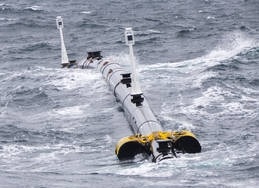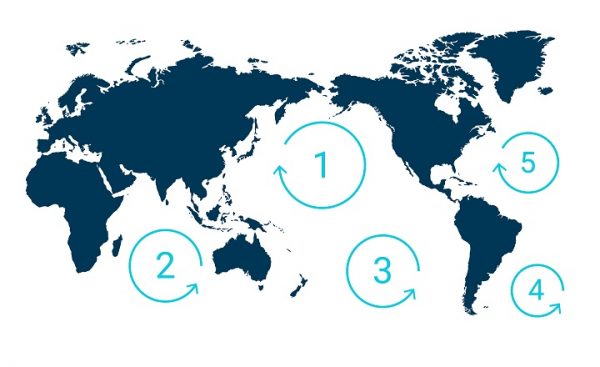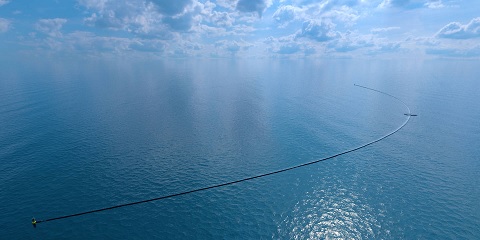 The Rotterdam, Netherlands based nonprofit group –Ocean Cleanup– has designed a passive system with two main components both made of plastics. It is a long flexible high density polyethylene pipe floater and a polyester woven skirt attached below it. This new technology is trying to tackle plastics pollution in oceans.
The Rotterdam, Netherlands based nonprofit group –Ocean Cleanup– has designed a passive system with two main components both made of plastics. It is a long flexible high density polyethylene pipe floater and a polyester woven skirt attached below it. This new technology is trying to tackle plastics pollution in oceans.
Ocean Cleanup has successfully tested a free-floating system to collect marine debris from the Great Pacific Garbage Patch and will deploy it in early September.
The system has been designed so that the buoyant and flexible HDPE pipe bobs atop the Pacific Ocean to keep garbage from flowing over it, while the drag on the skirt, which is tapered, forms a U-shape that captures plastic floating at or near the surface.
The pilot test was conducted with 120 meters of Agru XXL pipe and 72 meters of skirt or screen that is 3 meters deep at the center. The system was assembled with clamping brackets in Alameda, Calif., then pulled by boat through San Francisco Bay for 1,200 nautical miles to the trash vortex in the Pacific Ocean, between California and Hawaii.
The largest of the five zones where plastics accumulate, the North Pacific garbage patch is said to be twice the size of Texas and holds 1.8 trillion pieces of plastic that entered the ocean mostly through rivers. That’s 250 pieces of plastic for every person on the planet. Fishing nets make up 46 percent of the gyre and 20 percent came from the 2011 tsunami in Japan, according to scientists with the Ocean Cleanup, who also say much of the plastic is rigid PE and polypropylene.
A two-week test of the collection system’s durability and hydrodynamics was done in May. Some results were shared on social media in July, including the system withstanding 5-meter waves and forces of the ocean.
The Ocean Cleanup envisions a fleet of 60 plastic-culling floaters that are 600 meters long each and equipped with solar power lights, cameras, sensors, anticollision beacons and satellite antennas to communicate their locations and gather performance data, including an alert that the U-shaped center is full. An online summary of primary components says pipe with a 4-foot diameter will be used.
The system will be launched in 23 days, 1 hour and 8 minutes from the date and time of publication of this news!
 Ocean garbage patches are vast and dispersed
Ocean garbage patches are vast and dispersed
Ocean currents concentrate plastic in five areas in the world: the subtropical gyres, also known as the world’s “ocean garbage patches”. Once in these patches, the plastic will not go away by itself. The challenge of cleaning up the gyres is the plastic pollution spreads across millions of square kilometers and travels in all directions. Covering this area using vessels and nets would take thousands of years and cost billions of dollars to complete. How can we use these ocean currents to our advantage?
















